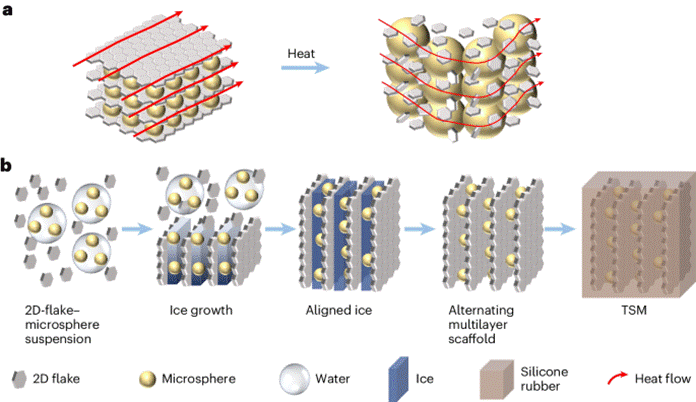The rapid development of large-scale energy storage has raised higher requirements for the thermal safety and longevity of battery stacks. One of the current bottlenecks in battery thermal safety research is how to balance the demand for uniform thermal conductivity within the normal operating temperature range of battery cells and the high-temperature insulation required during thermal runaway in the limited space between individual battery cells.
Recently, in collaboration with Lu Jun’s research team from Zhejiang University, Yang Ying’s team from the Department of Electrical Engineering and Applied Electronics (EEA) of Tsinghua University designed and fabricated a thermal response material that switches from conductive to insulating based on the thermal runaway temperature of the battery. This material serves as a separator between individual battery cells and has achieved groundbreaking innovations in preventing the thermal diffusion that leads to the spread of thermal runaway, thus enhancing the operational safety of battery packs.
The research team proposed the use of thermally-triggered expanding microspheres embedded between two-dimensional conductive skeleton layers as thermal switches. The micro stress and strain from the expanding microspheres disperse the conductive skeleton. The instantaneous thermal shock power generated during battery thermal runaway further ceramicizes the separator in situ, forming a structure akin to aerogel.

Figure 1: Switching Principle and Preparation Method of Thermal Switching Materials
The porous structure ensures that the separator material quickly enters an insulating state, preventing the occurrence of thermal diffusion. This thermal switching material can rapidly switch from >1.0 W/(m·K) to <0.1 W/(m·K) on a similar time scale after battery thermal runaway, with a switching temperature range of 90-100°C, satisfying the requirements for both battery thermal management and thermal runaway prevention. The research findings are expected to provide theoretical support and design basis for the development and application of next-generation integrated battery thermal safety systems.

















 News & Events
News & Events